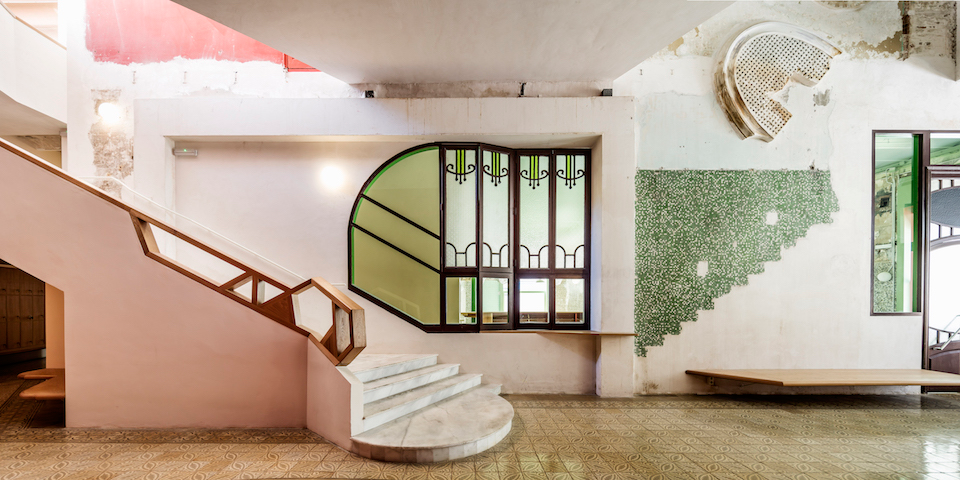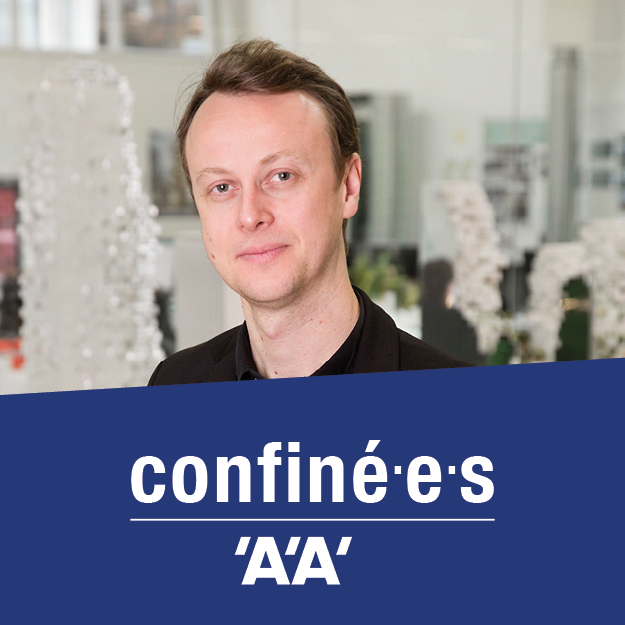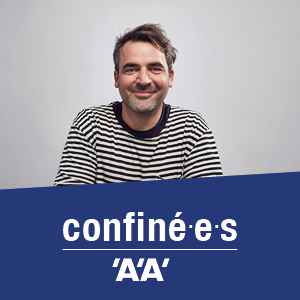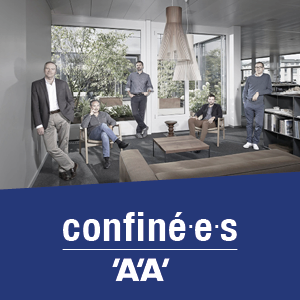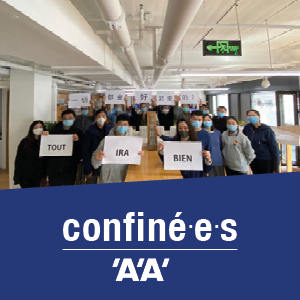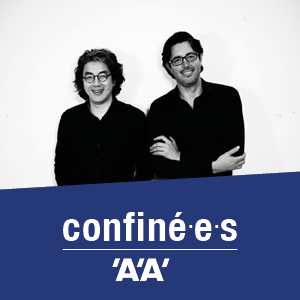Confiné.e.s : Flores & Prats
Face au confinement imposé à tous pour contrer la propagation du virus Covid-19, nombre d’architectes ont dû adapter leur pratique et leur méthode de travail à ce nouveau rythme de vie. La série « Confiné.e.s » leur donne la parole, en interrogeant leur vision de la situation — mais aussi leurs recommandations culturelles. Aujourd’hui nous nous rendons en Espagne à la rencontre de Eva Prats et Ricardo Flores, co-fondateurs de Flores & Prats.
[L’entretien suivant a été conduit en anglais, le voici en attendant sa version française.]
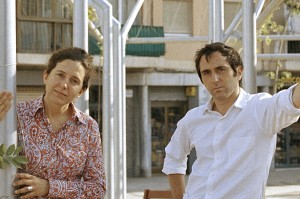
L’Architecture d’Aujourd’hui: Where are you locked down and how did you get organized to continue working?
Eva Prats & Ricardo Flores: We are at home, in Barcelona city centre, mostly working on a recently won competition to renovate the ancient Théâtre des Variétés, in the middle of Brussels, to convert it into an International Laboratory for Artistic Creation. We have won this competition together with the Belgium office OUEST Architecture, and fortunately the client, the Société Bruxelles Laïque, decided to go ahead and get on to work straight away, so we are intensively drawing, working on the first phase of the project right now, which we should complete in July.
We try to keep the intensity of the collective work of our studio through a permanent interaction with our collaborators by Internet. Regarding ourselves, as our working process is developed through hand drawing, we have installed a big table, similar in dimensions to those of our studio, in the middle of our living room, and brought all our drawing tools, models and drawings of the project we are working on, some of the books that inspire us the most… to have them around us. All these materials helped to create an atmosphere that keeps us concentrated to draw and reflect on the project, they keep us company.
Are containment and architecture opposites?
In our way of doing architecture there is a double component, complementary one to the other: there is a physical approach to the context, taking data and information from the reality, and later there is the use of this data at the studio to help us reflect and draw. At this moment the part of our work that has to do with the physical contact with the reality and the clients, which is crucial for us to be able to draw, is missing.
On the other hand, as the trips and movements we had to do for other commitments are not taking place, the confinement has given more regularity to the reflective part of our discipline. But of course, we are missing the balance between working in the streets and working in the studio.
What lessons do you think you will learn from the ecological impact of this crisis?
We have seen these past days how animals and nature took over the cities quickly, as the citizens were not using them, making evident that we are part of the nature and that big cities have developed stepping over nature and against it.
In recent years there has been a discussion going on in Barcelona about the “Super-blocks”, an idea to circumscribe parts of the city for reducing car circulation in order to allow other activities to take place in these zones. It has been a discussion in our city for a long time and now, when you see how beneficial it is to have nature intermingled with city life, we think how good it would be to lose half of the asphalt in our town.
A film to see / a book to read during lockdown?
A book would be the classic Boccacio’s The Decameron, as it evokes the confinement of a group of young people in a villa outside Florence, attempting to escape the grip of the Black Death. The tales and stories explained there make the characters forget the current situation for a while, and therefore keep calm.
These days are good to re-watch some of our favorite films, like The apartment or Some like it hot, by Billy Wilder, being more aware of the scenes that happen in interior spaces, as our sensibility is sharper, and makes us conscious of the dimensions and ways of using these spaces now that we are confronted to them 100% of our time.
An account to follow on social networks?
The Architecture Foundation, leaded by Ellis Woodman, has made an online program called 100 Day Studio, consisting in a daily series of free live online lectures interviews, panel discussions and readings forming an extremely rich program, which is really worth following.
What do you expect from this experience?
We have reflected these days on the fact that we have suddenly stopped meeting our collaborators, clients and students, and we see that not having the opportunity to see them and talk to them means losing the complicity of the encounters: the gaze, the smile, the strength of a voice… which is a very powerful and crucial component of communication. We think that in this sense this crisis has made evident the physical component of our intellectual work, the emphatic side of our discipline, which we cannot lose and avoid. Therefore, when we hear that some people think that this situation shows the way work can be developed in the future, we cannot agree, as we think that direct and physical interactions between people, coincidences and complicities are a key aspect of our activity as architects, they are the resource from where to reflect and draw.
What impact does this containment have on the perception of both your workspace and domestic space?
We envision our studio as a place to interact, where people spend hours sharing and discussing ideas, and from these connections new things appear. This is how we understand a true creative realm should be, and therefore not having those rooms and our collaborators around us has been the hardest part so far. We are really looking forward to returning to those spaces again.
_____
Le site de Flores & Prats.
_____


